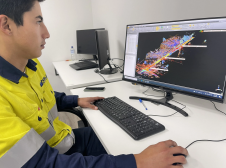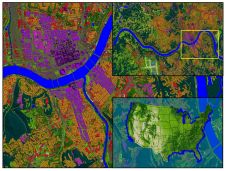The Evolution of GIS MOOCs
Free online courses have been around for a while in the geospatial sector. Adena Schutzberg reviews their short history and offers some cautionary words for would-be students.
The New York Timesidentified the Year of the MOOC in November of 2012. Back then, the three MOOC platform providers were Coursera, Udacity and edX. In June 2013 Google offered “Mapping with Google,” on its own platform, to teach students about its mapping service. In July of that year, Penn State offered “Maps and the Geospatial Revolution” on Coursera. These and other early offerings were free to take and included certificates for students who completed the required tasks. The platform providers were still defining their business models. Those writing the courses pondered the value. One GIS conference discussion I attended concluded they were strictly marketing efforts.
目前的
Spin forward to 2017 and the MOOC world looks different. The platform providers have all restructured their offerings toward profit. They offer fewer free courses and certificates. They’ve grouped courses into specializations or “nano-degrees” and require payment per course or per month. They made deals with industry players to use the platforms for employee training and professional development. They continue to pursue fee-based college credit solutions and offer full graduate degrees.
What happened to the early GJS MOOCs? Google never offered its MOOC again, but now offers “Google Maps APIs” as a free, on-demand course on Udacity. Penn State announced this winter it will offer its well-regarded maps course (and others) on the UK’s largest MOOC platform, FutureLearn. Other GIS MOOCs, including more than one featuring desktop GIS, appeared but few continue to be offered with cohorts in the hundreds. Esri offered its first MOOC in 2014 and now offers four, soon to be five, different courses. Other companies including MongoDB and Alteryx offer GIS related MOOCs.
The Question
Course providers as well as potential students and hiring managers, look at MOOCs from a different perspective than the platform providers. They ask: how effective are these large, open(ish), free(ish) courses at delivering knowledge and skills? Where do they fit alongside formal coursework, informal learning and self-learning?
The answer is familiar: it depends. MOOCs are just like other educational opportunities: the value and effectiveness of the teaching and learning depends on the teacher(s), the student(s), the course content, and the environment.
To date, GIS MOOCs lean towards the introductory. While some focus on topics and ways of thinking (spatial analysis, geodesign) others focus on software use (ArcGIS, QGIS). Less motivated students will do the minimum. More motivated ones will, like their counterparts in college degree programmes, go further. I’ll re-phrase the old Tom Lehrer joke about life being like a sewer. MOOCs are like sewers: What you get out of them depends on what you put in to them.
How can MOOC course providers, students and hiring managers “use” MOOCs in 2017? Course providers (individuals, colleges and universities, non-profits, private companies) can offer MOOCs to educate their target audience, enhance personal and organizational branding, and market products or services.
Students of all ages and experience levels can take MOOCs to follow their interests or fill gaps in their learning. I encourage those interested to (1) do their homework when selecting a course, (2) learn all they can from the course, (3) network within the course, and (4) collect their class projects into a portfolio. Further, anyone who completes a MOOC should note it on their resumé, CV or LinkedIn to show their interests, motivation and commitment to continued learning.
Hiring managers can drop in to MOOCs to look for energetic, helpful and successful students. During interviews, they can ask applicants about what they learned in a MOOC and why they took them. Managers and HR departments can view MOOCs as free(ish) personal development opportunities for their employees.
MOOCs Are No Panacea
MOOCs are not a silver bullet to solve educational disparities or magically increase the GIS workforce. But they are a key free(ish) resource for those wanting to grow their knowledge about GIS. In fact, used wisely, course providers, students and hiring managers all can get quite a lot of out of MOOCs.
This article was published in GIS Professional April 2017
Make your inbox more interesting.Add some geo.
Keep abreast of news, developments and technological advancement in the geomatics industry.
Sign up for free
























